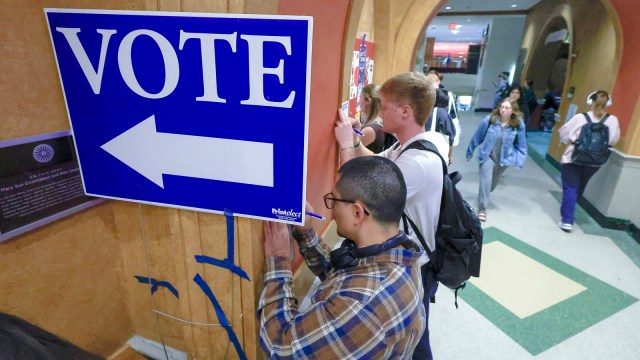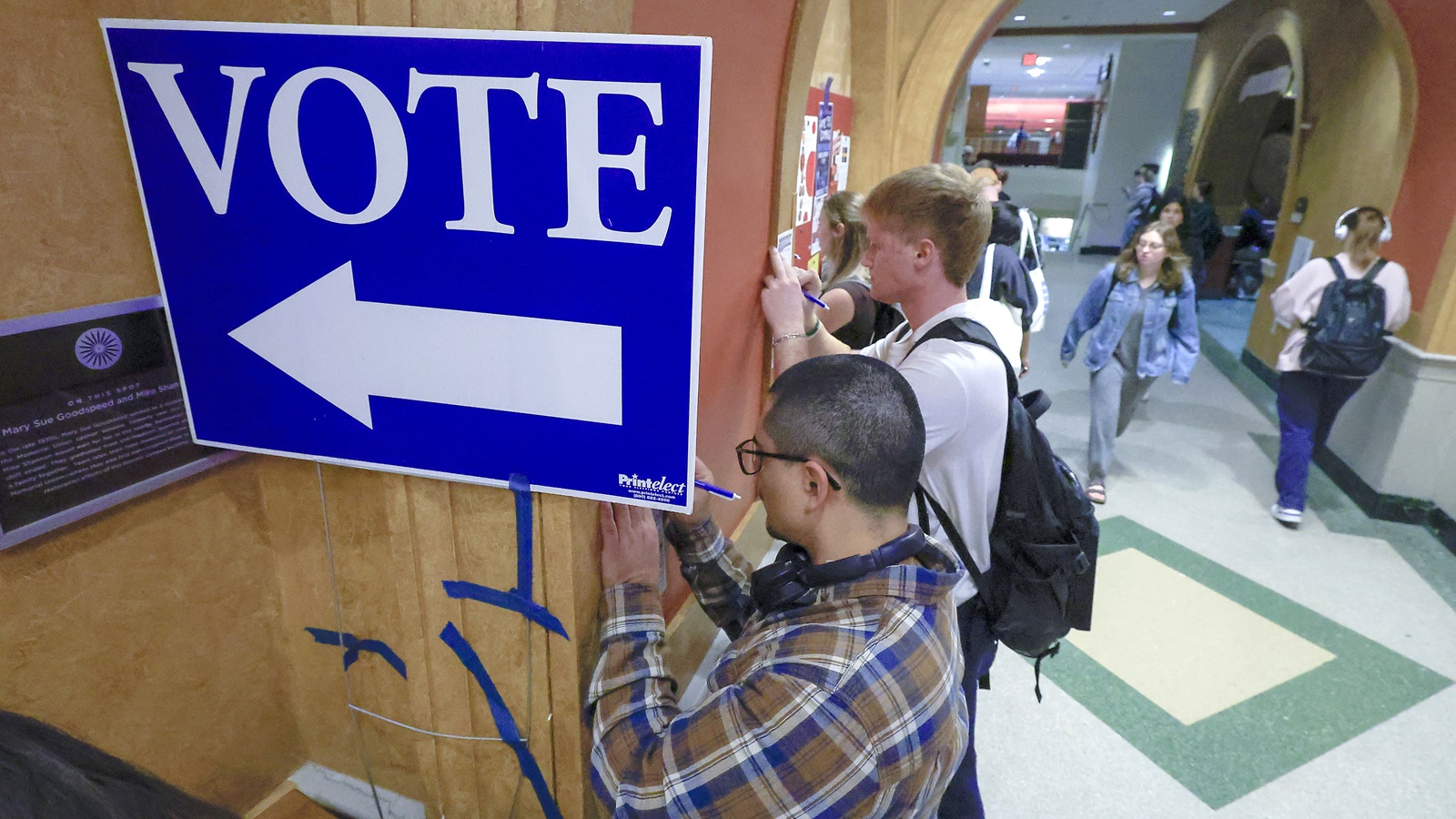
I remember November 8, 2016, like it was yesterday. Sitting pretty in the Blue state of New York, with Hillary Clinton’s projected chances of winning the presidency at a 71.4 per cent high, my college campus was abuzz with plans for watch parties and after parties. As a student body that identifies as at least 60 per cent liberal, and politically active across the board, support for Clinton was visible in blue streamers, blue snacks, blue t-shirts and even painted faces.
Preparation for election day had begun months in advance. With Democrat Bernie Sanders’ visit in April 2016, there was greater vigour among politically active students to encourage everyone to vote. And days before the ill-fated D-day, political student organisations set up stalls all over the dining areas, with blue-and-red candy as bait, to appeal to the maximum number of students to “exercise your right as a citizen”. Buses were also arranged for voters in-state. After all, we were in “the greatest democracy in the world”.
But as an international student, barely one year in, it was not my (political) circus, not my monkeys. On counting night, I went to the watch party organised by the Democrats and watched the drama unfold. I asked my American friends how exactly voting worked and sat with them to cheer and support them on election night. No one was prepared for the outcome.
The counting began with a lot of blue on TV and loud cheers of glee. Hillary started strong and spirits were high: “We are about to get the first woman President!” and “We are witnessing history in the making!” Indeed, we were witnessing history, but not in the way we had imagined. As the night went on, hints of red began appearing on screen — and enlarging. The sense of euphoria was replaced with eerie pockets of silence. There was a visible wave of dread passing through the room as the blue was slowly and steadily replaced with red. Before counting had finished, the outcome was clear. Donald Trump was to be the 45th President of the United States.
Cut to 2024. This time, I’m watching a similar spectacle unfold — but from an Indian newsroom. I’m tuned less into the emotions of those directly affected and more into analyses of those sitting far away. The idea of a Trump presidency seems a tad less scary and that of Kamala Harris isn’t great news either. Listening to both of their takes on abortion, immigration policy, gun control, the Gaza genocide, environmental impact, approach to big business and other polarising issues is almost equally disturbing.
Counting is coming to an end and the result is fairly clear — Trump 2.0. The aftermath, though, will not be very different. Harris may have made headway in abortion rights and gun control, but she would be just as ruthless for Gaza and maybe slightly harder on big businesses. For an outsider, who has been an insider, the stakes are much lower. For one, I no longer have to worry about whether I will be considered an alien in a foreign country or deported after 90 days of unemployment. Sure, this time around Trump promised green cards to all foreign graduates, but we all know how much his word means.
The phenomenon of Trump was brand new in 2016. No other president had been as erratic, bombastic or absurd. In hindsight, he only seemed to echo what the American public and certain Republicans believed. But in a country that would consider political talk “impolite” in the company of strangers, Trump’s open aggression was absolutely jarring. And therein lay his appeal.
Kamala Harris did manage to “brat summer” her way into the hearts of citizens. But her unwavering stance on the Gaza genocide may have alienated many Democrats who would either have voted independent or not at all. Another potential blow to her candidacy is her wavering focus on abortion on the campaign trail — one of her key appeals in the beginning. Given her fairly successful stint as Vice President, and scores of celebrity endorsements, she seemed to be America’s sweetheart, until polling began.
The day after election day in 2016 was the most depressing day on campus. Professors awarded grace days for assignments, attendance was at an all-time low and session after session was held to discuss mental health, self-care and reflecting upon “how we let this happen”. We didn’t realise it then, living as we were in our bubble of the liberal arts college. But the devastating reality is that this has been Trump’s America. Protectionist, “keep the Mexicans out”, build walls, ban Muslims, ban abortions. The illusion was actually the great American dream.
Today, there is much gloom in the air. I’m glad I moved out of the US when I did. Because watching Trump be sworn in the first time around was bad enough — imagine having to go through it all over again. The horrors do indeed persist — but so do I (outside Trump 2.0).
adya.goyal@expressindia.com
© The Indian Express Pvt Ltd
First uploaded on: 06-11-2024 at 13:58 IST



